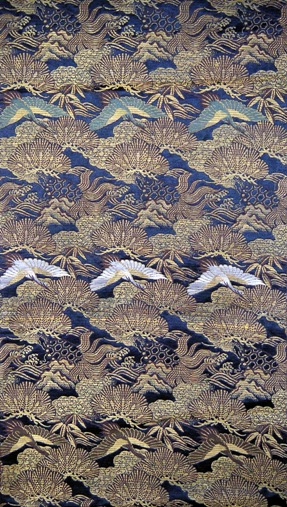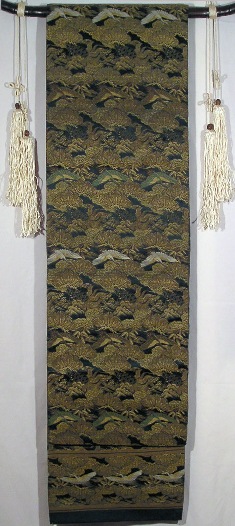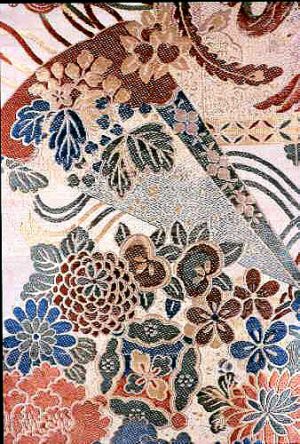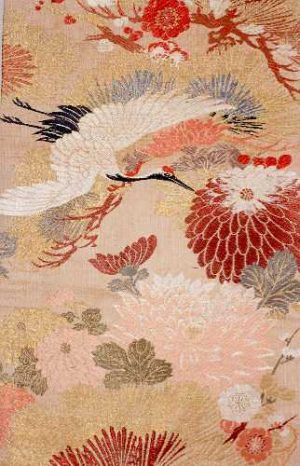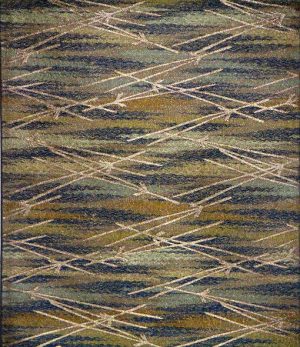Description
Obi in pristine condition from the late 1700s to the very early 1800s are exceedingly rare. The intricate pattern of the hand weaving is exceptional.
This is a rare, hand woven Silk “Maru Obi,” which is the most formal and most expensive of the Japanese Obi. A Maru Obi has but one seam, and has been woven in a continuous repeat pattern and folded over to create 2 visions of the same dramatic scene. A unique feature of the Maru Obi (found only in some antique examples) is a dyeing and weaving process that, when hung and viewed from different angles, appears to make the dominate colors change. The background is an unusual shade of dark blue, while all the elements of the design have been created through the use of all natural dyes, providing unusual highlighting to the individual features. The weaving is extraordinary, as there is very little of the Obi that is not devoted to the overall pattern.
This is a very intricately hand woven, repeat row pattern of blue and white Flying Crane (“Tsuru”) and Bamboo (“Take”), stylized Pine (“Matsu”) interspersed with Cherry Blossoms (“Ume”), and the long tailed Tortoise (“Minogame”) among the stylized Waves (“Nami”). Each of these motifs holds a special meaning in the Japanese culture. The Crane represent long life (as legend has it that it takes the Crane 1000 years to fly to the Sun) and good fortune, while the Bamboo incorporates the characteristics of strength and flexibility. The Pine also stands for longevity, while the Minogame reinforces this idea because its tail does not grow until the tortoise is 500 years old, and, thus, it is an emblem for longevity.
The intricacy of the design and the unusual and striking colors attest to the artistry of the weaver, while the stripes at the bottom of the pattern denote that a woman of high rank and wealth in Japanese society wore this dramatic Obi.
A Certificate of Authenticity is included.
TTAC will personally pack and ship via UPS at company expense within the continental U.S.

